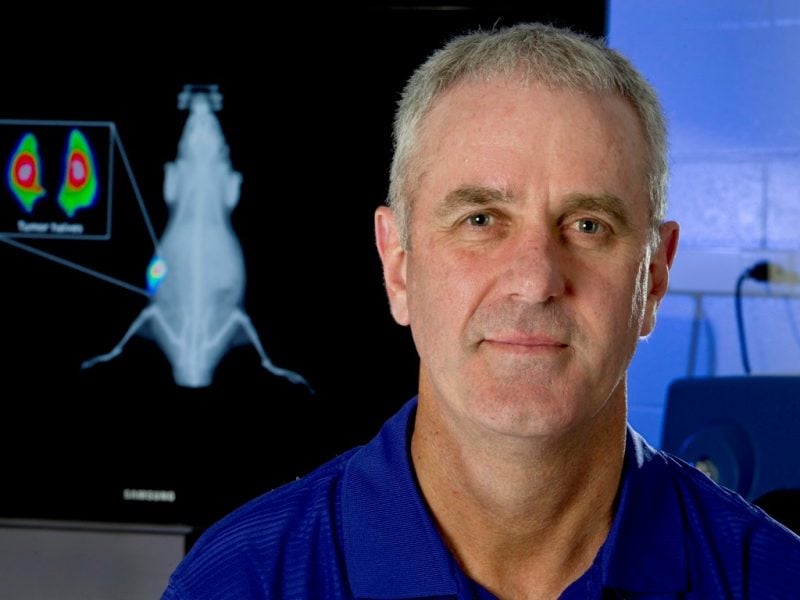
We welcome Dr. Bradley D. Smith, Emil T. Hofman Professor of Chemistry and Biochemistry at the University of Notre Dame, as this Friday’s Seminar Speaker. The seminar on Near-Infrared Fluorescent Probes for Bioimaging will begin at 3:00 pm via Zoom.
Abstract: The lecture will describe new families of near-infrared absorbing molecular probes. Cell microscopists have a need for fluorophores with high photostability, extreme brightness, low phototoxicity, and user-friendly bioconjugation. In contrast, in vivo imaging researchers and fluorescence-guided surgeons strongly prefer fluorescent probes that emit low-energy near-infrared light since it can penetrate through skin and tissue. A family of interlocked molecules called Squaraine-Rotaxanes are valuable as extremely bright and stable deep-red fluorescent probes and they are being used increasingly for single-molecule tracking studies. A new dye architecture called Squaraine Figure-Eight enables the insertion of peptide units into the probe structure to create targeted probes. Another new probe system is based on sterically shielded near-infrared heptamethine cyanine dyes that have unsurpassed performance properties such as high stability and low propensity for non-specific interaction with biological surfaces. Bioconjugates of these shielded heptamethine cyanine dyes include antibody and peptide systems with superb bioimaging performance in cells and in living subjects.
Bio: Bradley D. Smith is the Emil T. Hofman Professor of Chemistry and Biochemistry at the University of Notre Dame, Indiana, USA. He is also Director of the Notre Dame Integrated Imaging Facility that supports university imaging research. He is the author of 260 research publications and Associate Editor of the ACS journal Bioconjugate Chemistry. His research group develops molecular probes for detecting and treating cancer or microbial infections in living subjects. Dr. Smith has invented a series of near-infrared fluorescent dye molecules and converted them into imaging probes for a wide range of applications in biomedical science, biotechnology, and nanotechnology.